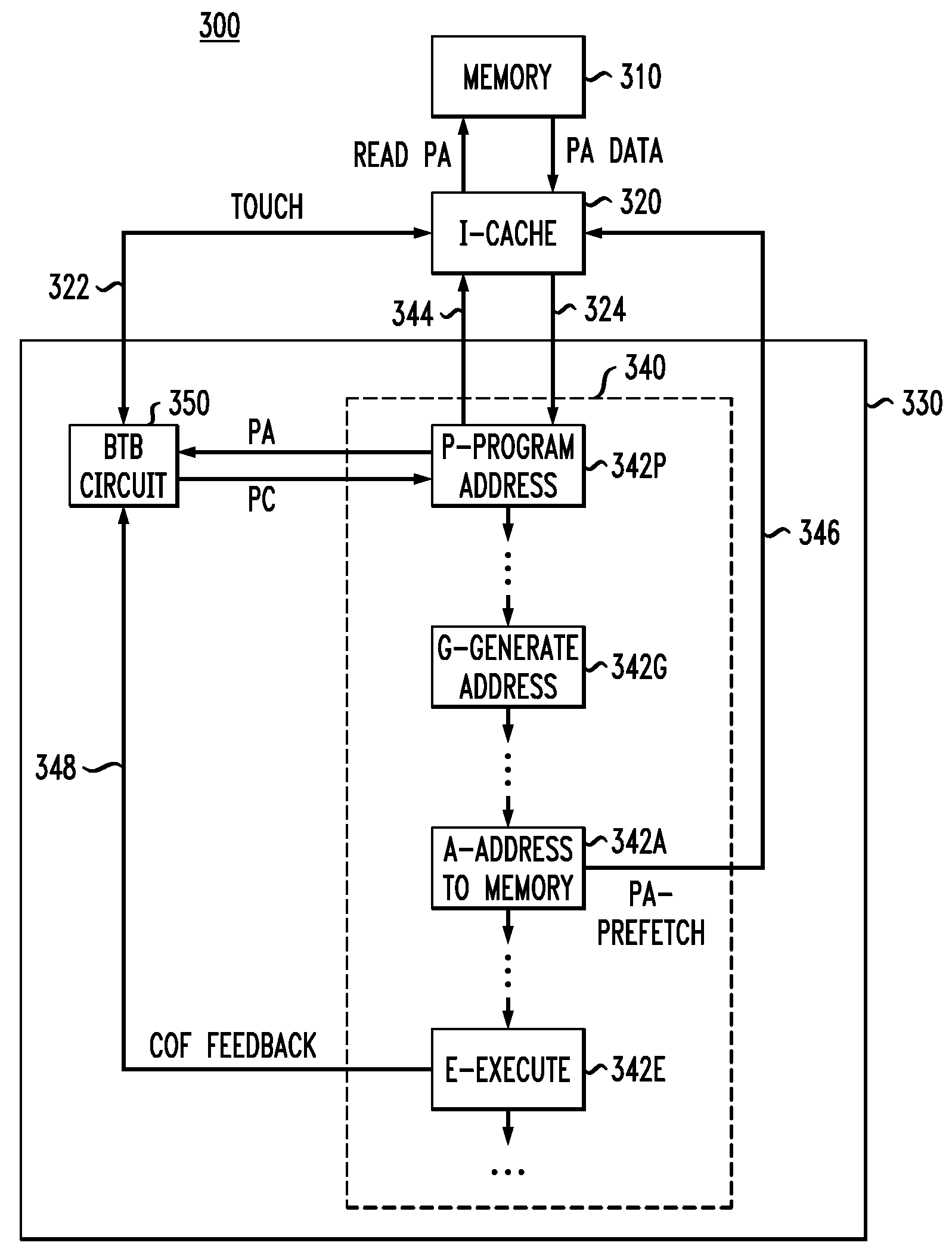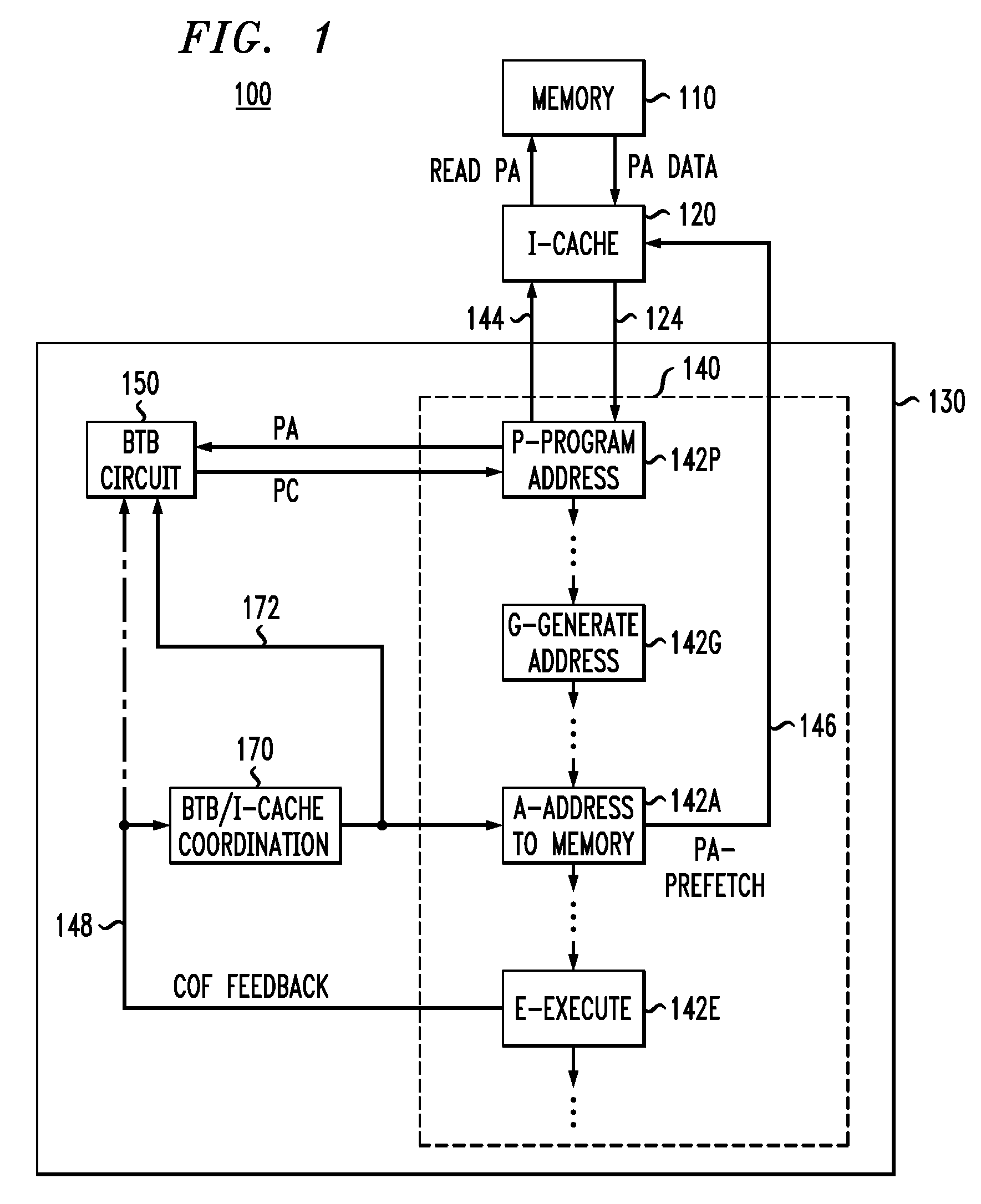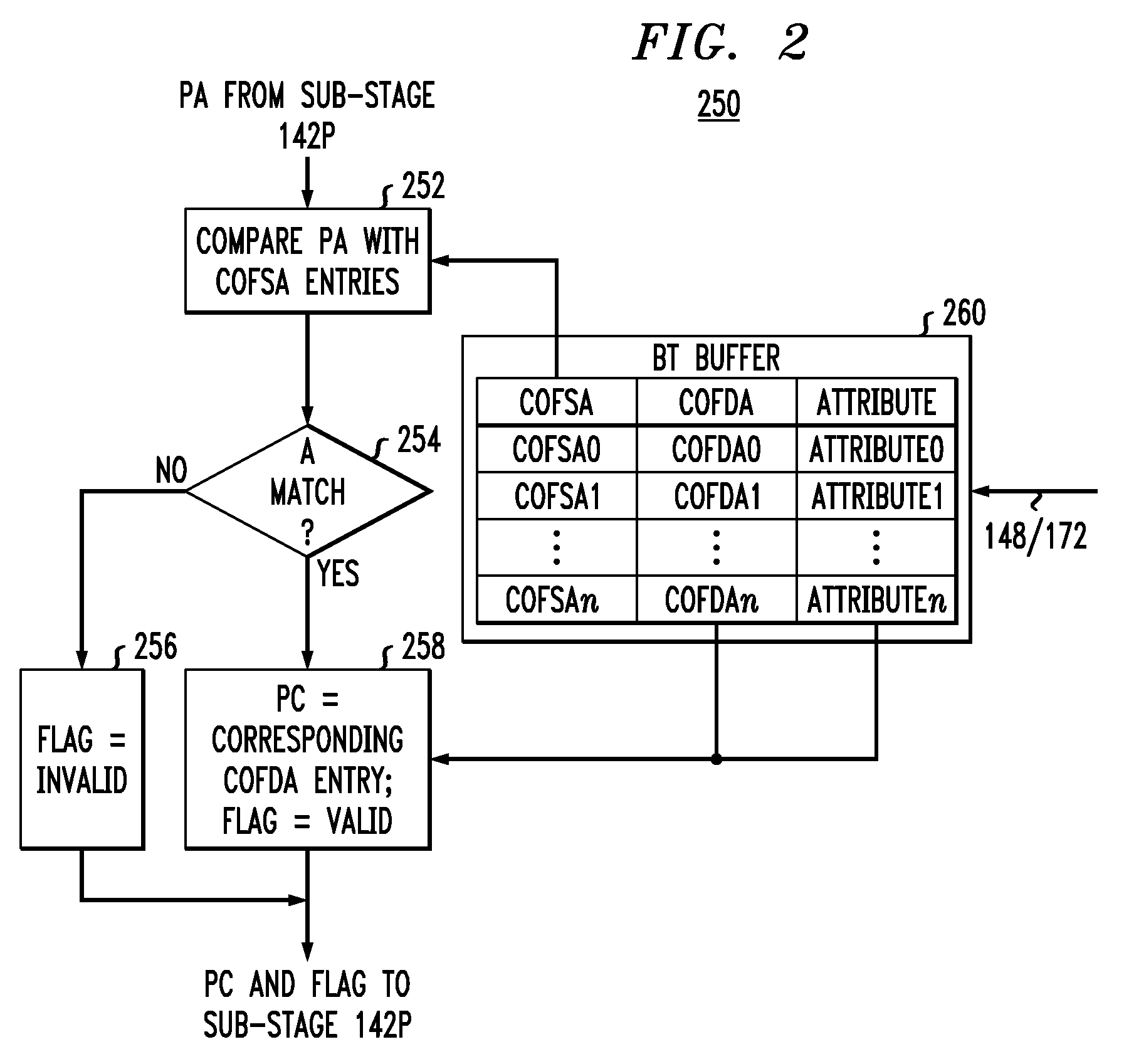Coordination between a branch-target-buffer circuit and an instruction cache
a buffer circuit and instruction cache technology, applied in the direction of program control, computation using denominational number representation, instruments, etc., can solve the problems of interrupting the timely flow of instructions through the pipeline, affecting the timely flow of instructions, and stalling the pipeline of branch instruction, so as to reduce the number of i-cache misses
- Summary
- Abstract
- Description
- Claims
- Application Information
AI Technical Summary
Benefits of technology
Problems solved by technology
Method used
Image
Examples
Embodiment Construction
[0014]FIG. 1 shows a block diagram of a digital signal processor (DSP) 100 according to one embodiment of the invention. DSP 100 has a core 130 operatively coupled to an instruction cache (I-cache) 120 and a memory 110. In one embodiment, I-cache 120 is a level-I cache located on-chip together with DSP core 130, while memory 110 is a main memory located off-chip. In another embodiment, memory 110 is a main memory located on chip.
[0015]DSP core 130 has a processing pipeline 140 comprising a plurality of pipeline stages. In a one embodiment, processing pipeline 140 includes the following representative stages: (1) a fetch-and-decode stage; (2) a group stage; (3) a dispatch stage; (4) an address-generation stage; (5) a first memory-read stage; (6) a second memory-read stage; (7) an execute stage; and (8) a write stage. Note that FIG. 1 explicitly shows only four pipeline sub-stages 142 that are relevant to the description of DSP 100 below. More specifically, pipeline sub-stages 142P, 1...
PUM
 Login to View More
Login to View More Abstract
Description
Claims
Application Information
 Login to View More
Login to View More - R&D
- Intellectual Property
- Life Sciences
- Materials
- Tech Scout
- Unparalleled Data Quality
- Higher Quality Content
- 60% Fewer Hallucinations
Browse by: Latest US Patents, China's latest patents, Technical Efficacy Thesaurus, Application Domain, Technology Topic, Popular Technical Reports.
© 2025 PatSnap. All rights reserved.Legal|Privacy policy|Modern Slavery Act Transparency Statement|Sitemap|About US| Contact US: help@patsnap.com



